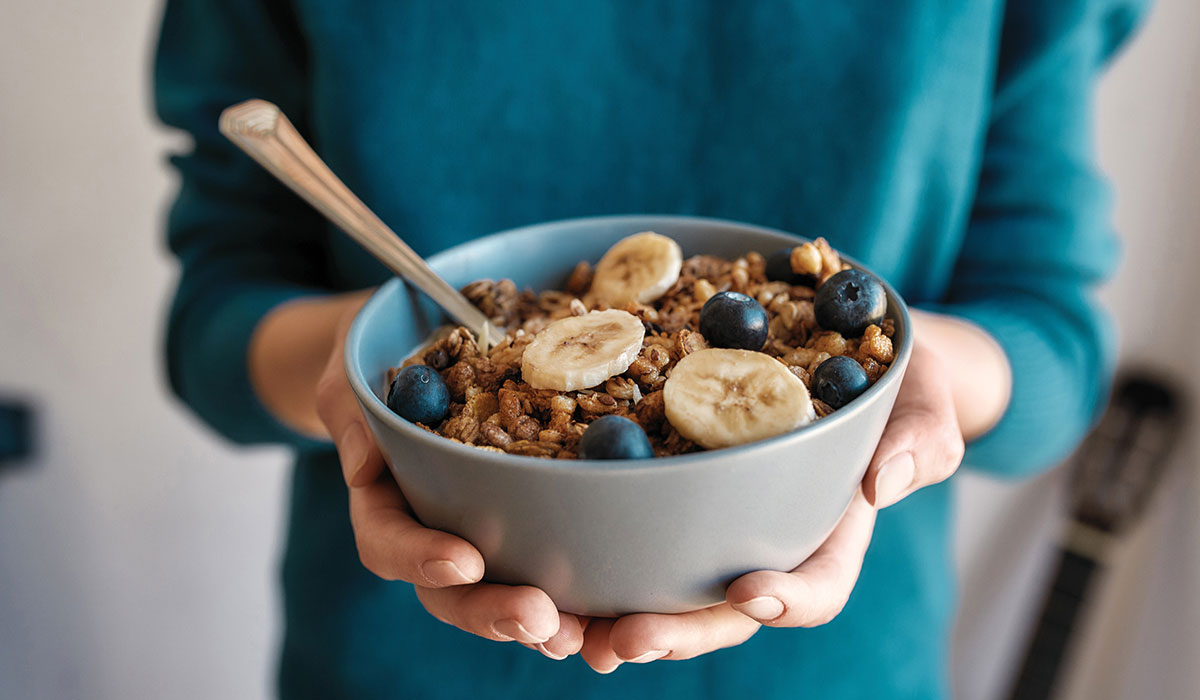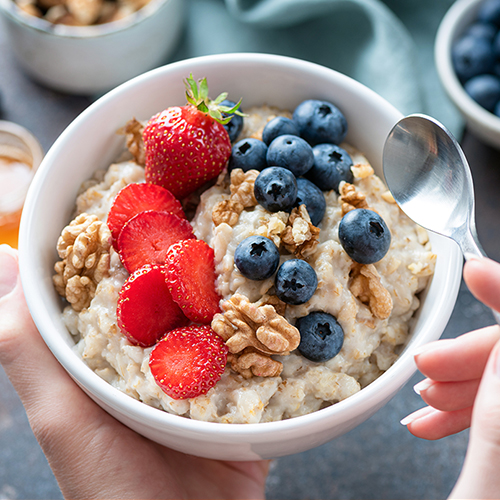January 2022
Nutrition is a young science, and there’s so much we don’t yet know about how food affects health. But one thing experts agree on is that fiber is absolutely a good thing.
Fiber is a type of carbohydrate that your body can’t digest. It’s found in unprocessed plant foods, like fruits, vegetables, whole grains, legumes, nuts, and seeds. The Academy of Nutrition and Dietetics recommends at least 38 grams of fiber per day for men 50 and younger, and at least 25 grams per day for women 50 and younger. The recommended amounts for men and women over 50 decreases to 30 grams and 21 grams, respectively. That’s because overall calorie consumption tends to decrease with age.
For reference, a slice of whole wheat bread contains about 2 grams of fiber, a medium skin-on apple contains 4 grams, and a cup of cooked chickpeas contains 12.5 grams.
There are two types of fiber, each with unique health benefits. Soluble fiber dissolves into a gel during digestion, while insoluble fiber stays intact. If you’re eating a variety of plant-based foods every day, you’re likely getting a good mix of both.
Unfortunately, most American adults only get about half the recommended amount of fiber. Harvard Health reported in 2019 that most of us eat between 10 and 15 grams per day. That’s a problem because fiber plays a crucial role in keeping our bodies healthy and preventing disease. If you suspect that your own fiber intake is lacking, here are four compelling reasons to increase your intake of fiber-rich foods.
1. It reduces your risk of diabetes.
A 2018 article published in The Journal of Nutrition looked at existing evidence on fiber intake and diabetes. The key finding: Adults who ate at least the recommended amount of fiber (25 grams per day for women, 38 grams per day for men) were significantly less likely to develop type 2 diabetes later in life. Also, the fiber found in whole grains might be the most effective in preventing diabetes.
2. It steadies your blood sugar.
A big reason why fiber reduces diabetes risk is that it helps keep your blood sugar steady. A 2017 randomized controlled trial published in the American Journal of Clinical Nutrition looked at how fiber affected the blood sugar levels of people with type 2 diabetes after a meal. People who ate 15 grams of fiber with breakfast had lower blood sugar levels than those who ate just over 3 grams of fiber, even though both groups ate the same number of calories.
3. It helps keep you regular.
There are two types of fiber. Soluble fiber dissolves into a gel during digestion, while insoluble fiber stays intact as it moves through your body. Both types of fiber play a unique role in keeping you regular. Soluble fiber helps your stool pass smoothly through your bowels, while insoluble fiber bulks it up and keeps it moving. According to the U.S. Department of Agriculture (USDA), both types of fiber help prevent constipation.
4. It can lower your cholesterol, reducing your risk of heart disease and stroke.
The American Heart Association recommends getting at least 25 grams of fiber per day, because fiber lowers your risk of heart disease and stroke. That’s because fiber reduces the amount of cholesterol absorbed into your blood stream, thus lowering your LDL cholesterol levels over time. High-fiber foods have other heart-healthy benefits as well, like reducing blood pressure and chronic inflammation.
How to boost your fiber intake.
To hit your daily fiber goal, aim to eat 8 to 10 grams of fiber at each meal. You can do that by choosing whole grains over refined grains, filling half of your plate with fruits and vegetables, and working in plant-based proteins like legumes and nuts.



